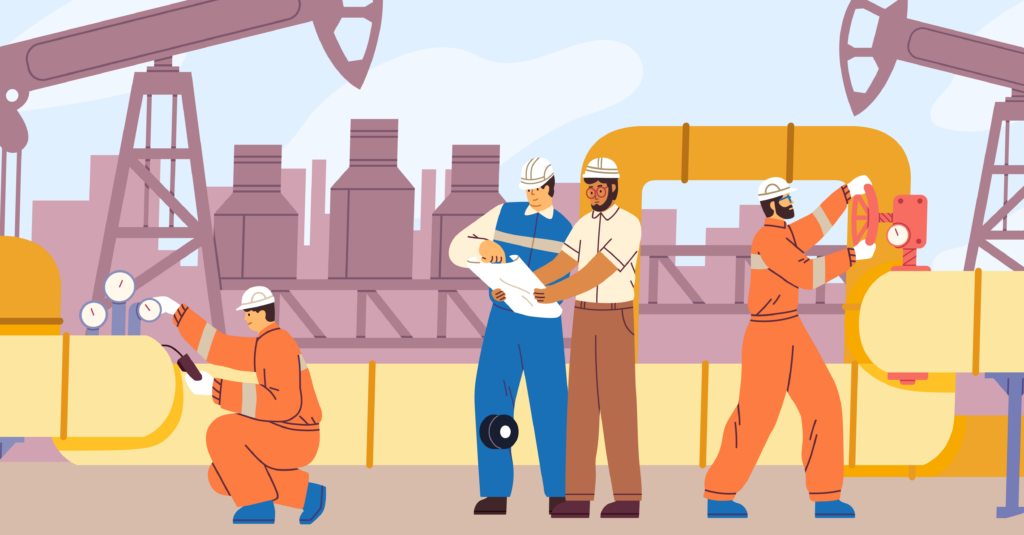What You Need to Know: The Four Key Steps When Performing a Job Safety Analysis (JSA)
March 16, 2022

A job safety analysis (JSA) or job hazard analysis (JHA) are generally interchangeable terms used to describe plans that define and outline how to control hazards associated with certain processes, jobs or procedures.
JSAs incorporate health and safety principles and practices into a task or job. When creating a JSA, or using Job Safety Analysis software, it’s important not to define a job too broadly or narrowly. In a JSA, each basic step of a job is determined, potential hazards are identified in each step, and recommendations are made for the safest way to perform it.
Recognizing hazards is a matter of watching a worker actually do a job. The analysis that follows should seek to identify undetected hazards and increase the job knowledge of those participating. The goal is to heighten safety and health awareness, improve communication between workers and promote greater acceptance of safe work procedures.
JSAs also provide initial job training education and help create briefing guides for infrequent jobs. JSAs might also become the standard for health and safety inspections or observations and support comprehensive accident investigations.
The Canadian Centre for Occupational Health and Safety (CCOHS) outlines four basic steps for conducting a job safety analysis:
Selecting the Job to Be Analyzed
Ideally, a JSA should be conducted for all jobs and revised whenever equipment, raw materials, processes or the environment changes. It’s suggested to take a first things-first approach and start by creating JSAs for those most critical jobs determined through a prioritization analysis, which CCOHS says should consider:
- Accident frequency and severity: Jobs where accidents occur frequently or where they occur infrequently but result in serious injuries.
- Potential for severe injuries or illnesses: Jobs where the consequences of an accident, hazardous condition or exposure to harmful products are potentially severe.
- Newly established jobs: Due to lack of experience in these jobs, hazards may not be evident or anticipated.
- Modified jobs: There may be new hazards associated with changes in job procedures.
- Infrequently performed jobs: Workers may be at greater risk when undertaking non-routine jobs, and a JSA provides a means of reviewing and identifying hazards in those tasks.
Breaking the Job Down Into a Sequence of Steps
A step is defined as “a segment of the job operation necessary to advance the work.” It’s important not to define the steps too broadly as missing important ones may result in associated hazards not being identified. On the flip side, too much detail creates too many steps. CCOHS’s rule of thumb suggests most jobs can be described in 10 steps or less. If more are required, then divide the job operation into two segments, each with a separate JSA.
Identifying Potential Hazards
The next stage is to identify potential hazards at each step. Rather than seeking to solve detected hazards and problems, the effort here should simply identify them. CCOHS suggests assessment through a series of targeted questions that might include:
- Can any body part get caught in or between objects?
- Do tools, machines, or equipment present any hazards?
- Can a worker make harmful contact with moving objects?
- Can a worker slip, trip or fall?
- Can a worker suffer strain from lifting, pushing or pulling?
- Is a worker exposed to extreme heat or cold?
- Is excessive noise or vibration a problem?
- Is there a danger from falling objects?
- Is lighting a problem?
- Can weather conditions affect safety?
- Is there possible exposure to harmful radiation?
- Can contact be made with hot, toxic or caustic products?
- Are there dusts, fumes, mists or vapors in the air?
Determining Preventive Measures
Eliminating or controlling hazards identified is the focus here. Generally accepted methods are listed below in order of preference:
- Eliminating the hazard – is the most effective measure and techniques to do it might include:
- Choosing a different process
- Modifying an existing process
- Substituting with a less hazardous product
- Improving the environment (such as adding ventilation)
- Modifying or changing the equipment or tools
- Containing the hazard – assuming the hazard can’t be eliminated. Contact could be prevented by using enclosures, machine guards, worker booths or similar devices.
- Revising work procedures – such as modifying hazardous steps, changing the sequence or adding additional steps.
- Reducing the exposure – is an option considered least effective and should only be used if other solutions are not possible. One way to minimize exposure is to reduce the number of times a hazard is encountered.
In listing and explaining preventive measures, CCOHS recommends avoiding general statements such as “be careful” or “use caution” and instead be specific and describe both what actions should be taken and how a job step should be performed.
An additional and essential follow-through step in JSA is ongoing monitoring and control or management. The effort here is to understand and validate whether a JSA works as desired. Monitoring helps ensure job safety and hazard concerns were abated or mitigated to a desired level and that the JSA is correctly implemented.
For a more complete discussion of JSAs and the importance of analytics in creating safer workplaces, download: The More You Know (Part 1): The Essentials of Job Safety Analysis






